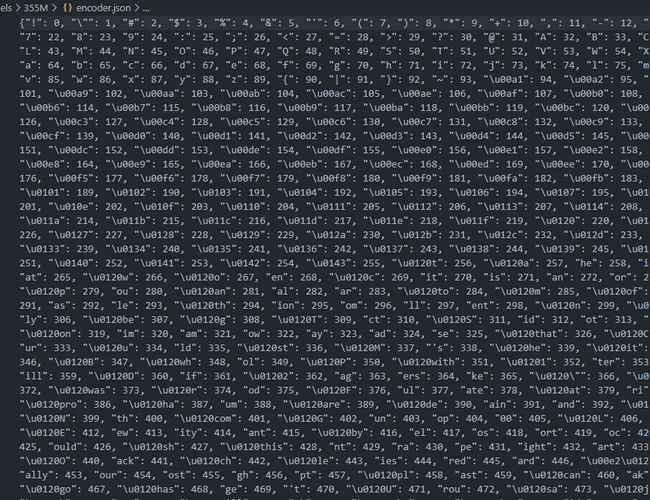BAM can link together data of different types. Associations...
From one side the model requires to use bipolar patterns - arrays of -1 and 1. But I need to store words and sentences. How do I decode them into that format? I looked into byte pair encoding (BPE) used in GPT-2. It basically tokenized by subwords.
How letters and words stored in neurons? Should I look into psychological research or just made up some decoder?
- Cannot achieve clusters and hierarchy with just one layer in BAM.
- Sadly words are triggered together with other neuron activity (even with electrodes placed in the brain, 'electrocorticography' - official name of the technique, we can't get much understanding)
- Every letter and every word stored in separate neurons.
GPT has a vocabulary size of 40,478 since they have 478 base characters and chose to stop training after 40,000 merges.
GPT-2 uses bytes as the base vocabulary, which is a clever trick to force the base vocabulary to be of size 256 while ensuring that every base character is included in the vocabulary. GPT-2 has a vocabulary size of 50,257, which corresponds to the 256 bytes base tokens, a special end-of-text token and the symbols learned with 50,000 merges.
From https://huggingface.co/docs/transformers/tokenizer_summary
Here is how BPE encoding looks like. You can see it as a dictionary used by GPT. It has subwords and single letters. But the amount of subwords is limited by researchers.
As a result they have flat vocabulary. By "flat" I mean all symbols are independent. Strange prefix \u0120 (sometimes printed as Ġ, [1], [2], [3]) denotes a space, which means that nothing can be prepended to symbols containing it.
But instead of being flat we need a hierarchical network that starts with single letters and combines them into subwords and words.
Next, firing of inputs is not "flat" as well. We will not present a word "hello" as a simultaneous input to first layer neurons
Papers
- Original - Kosko (1988) and a follow up with more examples
- Chartier uses two matrices instead of transposition of one matrix (another short paper)
- some explanation with code and pictures (but wrong tests, meaningless random data) post
- Tae-Dok Eom, Changkyu Choi, Ju-Jang Lee Generalized asymmetrical bidirectional associative memory for multiple association
- short version (still don’t understand what their notation means)
- more examples and explanation of chartier approach, good examples with text and picture associations. and more: temporal pattern sequences with the help of autoassociative layer (pdf)
- very formal and formula rich, mostly about stability
- another paper with many formulas, this time focused on memory capacity

